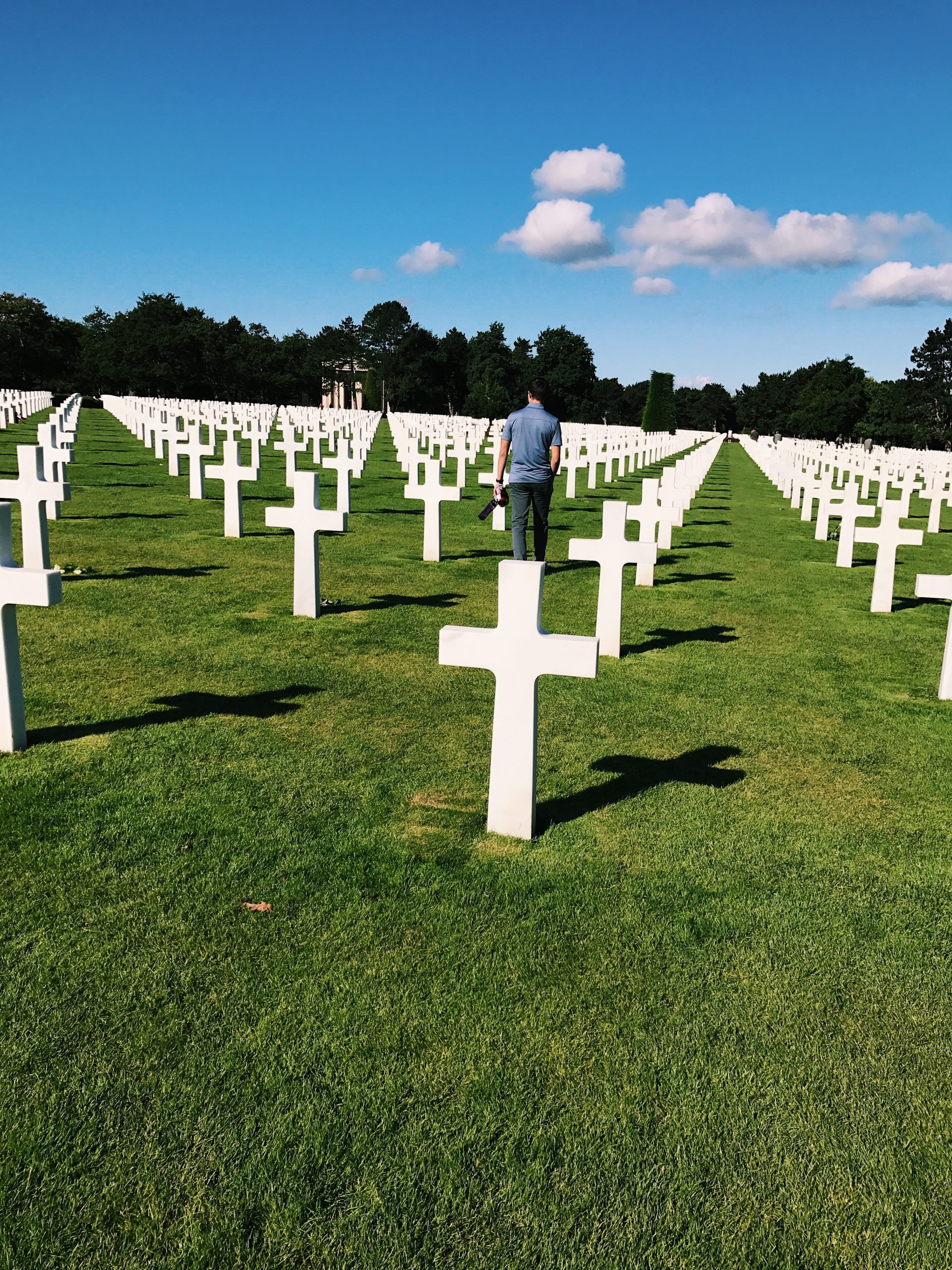
I visited Normandy, France on a cloudless, crisp morning. The group I was visiting with had woken up before the sun and watched the day emerge through the windows on a two-and-a-half-hour train ride from Paris. Though I thought I had a firm grasp on the things I was about to see, I truly do not think that anyone understands what they will encounter when they experience the beaches and cemetery of Normandy, France.
To give some background, the Allied Powers of World War II stormed the beaches of Normandy in an attempt to push back the German western front in France in what is known as the Normandy Invasion or Operation Overlord beginning on June 6, 1944. Germany’s war economy completely overshadowed other individual major world powers in the Allied Powers, like that of Great Britain and the Soviet Union, and without intervention, likely would have reigned over Europe for many years to come. It was a combination of some 156,000 soldiers from strong Allied Power countries, Canada, Great Britain, and the United States of America, that allowed for a successful invasion of a fifty-mile coastline.
Around the same time that we had woken up before the sun, troops began invading the somewhat unprepared German front by water and by air. Though the Germans were lacking in strategy as their commander Rommel was not there and they did not have a supply of tanks, the Germans had been able to lay mines all along the beaches, and with elevation and machine guns on their side, produced a one hundred percent causality rate of the first round of invasion on Omaha Beach. The Allied troops not only had a seemingly impossible climb up the shores of the Normandy beaches, but had to battle artillery and weather alike. The invasion was one of the bloodiest but most successful invasions by sea in military history. The fighting continued from the morning of June 6 to June 8, 1944, ending with the retreat of the Germans and the Allied Powers fully securing the beaches with some 326,000 troops, 50,000 vehicles, and 100,000 tons of equipment by June 11, 1944. The success of this operation is what led way to the liberation of western Europe from Nazi occupation, essentially ending the progress and success of the German war efforts.
I was raised with an intrinsic and severe respect and reverence of the military, so I arrived expecting to feel an instant connection with the place. My father is a nurse with the VA back home, and as I grew up I had the opportunity to meet quite a few war veterans, including a few WWII veterans. As we approached the beaches I could only think of the men that had let me hang from their amputated limbs when I was a child. We followed the path that gave us an elevated view of the beaches and stumbled upon the U.S. War Cemetery, and I found myself wiping tears as I read about the men that gave their lives from every part of our nation. The most impactful moment for me was when we were able to find a path that led us to the shoreline of Omaha Beach. I left my group, took my shoes off, and walked along the part of the sand that would be just barely touched by the waves. I tried to imagine the freezing water running red, the bright green grass littered with shrapnel, the screams of soldiers and artillery filling the air. I prayed there that it was all worth it. The weight on my body did not leave, and writing this still makes me feel like my throat and stomach will drop out. Over 425,000 troops of both Allied and German orientation died on that day. With the current political climate, the way it is, I wonder what they would say or do. I wonder if they think that it was worth it. I hope that it was worth it.

